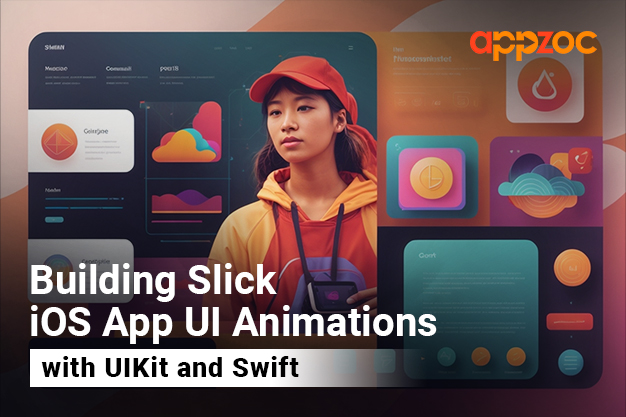
Flutter
Make the most of this cutting-edge technology by developing apps quickly! Our Flutter solutions have amazing features that can be used to create sleek, high-performance apps that can scale seamlessly across platforms.

In the realm of mobile app development, the adage “first impressions count” has never been truer. As users become increasingly discerning, the visual appeal and interactivity of an application can make or break its success. This is where UI animations come into play, especially for iOS applications. Apple’s UIKit framework, combined with the powerful Swift programming language, offers a potent mix for crafting fluid, captivating animations that can significantly elevate the user experience.
UIKit is a comprehensive framework provided by Apple for building graphical user interfaces. It contains a wide range of tools, from basic elements like buttons and labels to advanced components such as collection views and gesture recognizers. But one of its standout features is its robust animation capabilities.
Suppose you’re an iOS app developer based in Kerala or Bangalore, two hubs known for their vibrant tech ecosystems. In that case, you’re probably well-aware of the increasing demand for visually stunning apps. The competition in places like iOS app development Kerala and iOS app development in Bangalore is fierce, pushing developers to constantly up their game.
Swift, Apple’s intuitive and efficient programming language, seamlessly integrates with UIKit. This compatibility ensures that developers can harness the full potential of UIKit’s animation offerings. Let’s explore how you can build slick animations using this combination:
While the principles of animation remain consistent, it’s essential to adapt to local tastes and preferences. For instance, the design philosophies that resonate with users in Kerala might differ from those in Bangalore. If you’re targeting both regions, understanding the nuances of iOS app development Kerala and iOS app development in Bangalore becomes crucial. It’s not just about implementing animations but ensuring they align with regional user expectations and cultural nuances.
Animations can be resource-intensive. As such, it’s vital to ensure they’re optimized to run smoothly without draining device resources. Utilize Apple’s Instruments tool to profile and debug any performance issues related to animations. Also, always test animations on real devices, as the simulator might not accurately represent the actual performance.
In a world where user expectations are sky-high, delivering a visually appealing and interactive app experience is paramount. With UIKit and Swift at their disposal, developers have all the tools they need to craft captivating animations that can set their apps apart. Whether you’re diving into iOS app development in Kerala, aiming to capture the local market, or venturing into the bustling tech scene of iOS app development in Bangalore, remember that animations can be the secret sauce to elevate your app’s user experience. However, always strike a balance between aesthetics and performance, ensuring that your animations not only look good but also run seamlessly.